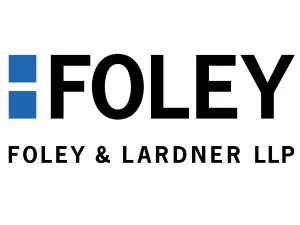- within Government, Public Sector, Coronavirus (COVID-19) and Insurance topic(s)
- with readers working within the Banking & Credit industries
As companies face mounting cost and supply pressures from rising tariffs, pricing managers are under growing pressure to adjust pricing strategies in fast-moving and uncertain conditions. As recently reported by the Wall Street Journal, companies have employed various strategies to deal with increased costs, with 47% of small businesses reporting they already have increased prices in 2025 and 60% indicating they plan to do so in the next three months.
Gathering timely and accurate market intelligence is often a critical component of informed decision making when it comes to developing a sound pricing strategy. Many such efforts are legitimate and should not draw scrutiny from enforcement officials. U.S. antitrust regulators, however, have made clear that tariff-related uncertainty is no excuse for crossing competitive boundaries. Further, the Department of Justice (DOJ) and other global authorities are actively scrutinizing whether businesses are using trade disruptions as a pretext for coordinated pricing behavior. In sectors already strained by supply-chain volatility, rising input costs, and unpredictable demand, enforcers are signaling their heightened vigilance for signs of anticompetitive conduct. For example, the Korea Fair Trade Commission (KFTC) noted in its annual work plan for 2025 that given "domestic and international uncertainties," it would implement measures enhancing economic recovery, including by cracking down on vertical relationships harming small business owners and monitoring for collusion in four key sectors ("health and safety," "food, clothing, and shelter," "construction and intermediate goods," and "public procurement").
Heightened Regulatory Vigilance Around Tariff-Driven Pricing Adjustments
Roger Alford, Principal Deputy Assistant Attorney General at the DOJ Antitrust Division, recently emphasized the need for competition authorities to remain vigilant for signs of collusion and manipulation of dynamic pricing models, particularly as companies adjust to heightened tariff levels. He warned that the imposition of trade barriers — such as tariffs that could reduce competition from abroad — can lead to market concentration, reducing the number of active suppliers and thereby increasing the risk of coordinated pricing or supply restrictions. Alford reiterated his warning in a media interview and noted that state attorneys general can sue for price gouging. He also shared that federal authorities are ready to act even in the absence of collusion. "I won't give people comfort to feel free to price high, as long as you do it on your own [without colluding]," insisted Alford. "We'll monitor the negative consequences of these tariffs very closely."
In a social media post, FTC Chairman Andrew Ferguson also cautioned against increasing prices under the guise of responding to tariffs: "President Trump is reorienting our nation's economy to put Americans first. As we adjust to the new economic order, the [FTC] will be watching closely to make sure American companies are vigorously competing on prices. These necessary tariffs should not be interpreted as a green light for price fixing or any other unlawful behavior. We will always protect American consumers." Ferguson's post came shortly after President Trump delivered a similar message to U.S. carmakers, urging them not to abuse tariffs by piling on additional price hikes.
One example of such scrutiny is the DOJ's recent investigation into egg prices. Despite arguments that rising egg prices resulted from market factors such as avian influenza outbreaks disrupting supply, after the DOJ issued subpoenas to major egg producers to examine potential collusion, prices dropped sharply, from $8 to $3 per dozen. Alford cited this as an example of risk that companies may engage in anticompetitive conduct in response to external pressures.
This is not the first time regulators have indicated they would aggressively investigate price increases during periods of systemic disruption. For example, during the COVID-19 pandemic, the DOJ and the FTC issued joint guidance stating they were on the alert for individuals and businesses using the pandemic as "an opportunity to subvert competition or prey on vulnerable Americans." The joint guidance further stated the agencies would stand ready to "pursue civil violations of the antitrust laws, which include agreements between individuals and business to restrain competition through increased prices, lower wages, decreased output, or reduced quality as well as efforts by monopolists to use their market power to engage in exclusionary conduct." The joint guidance also noted the agencies would "prosecute any criminal violations of the antitrust laws, which typically involve agreements or conspiracies between individuals or businesses to fix prices or wages, rig bids, or allocate markets."
Characterizing any price increases as a "tariff surcharge" also may raise scrutiny by regulators if doing so might promote coordination among competitors. For example, from 2006–2010, the DOJ Antitrust Division successfully investigated and prosecuted air cargo companies for colluding to implement fuel and security surcharge increases in response to rising security costs and oil prices. Coordination on the timing, surcharge range, or even the description and justification for surcharges could result in exposure to antitrust scrutiny. Even the act of collecting information — particularly around competitors' pricing or cost projections — can raise antitrust concerns if not properly structured. In recent years, the Antitrust Division has initiated civil antitrust actions against companies in various sectors that shared sensitive cost and pricing data under the theory that such conduct facilitated price collusion.
Practical Guidelines for Pricing Managers Navigating Tariff and Antitrust Risks
In this environment, pricing managers must walk a careful line between pricing responsively and implementing pricing changes that raise antitrust compliance risks, particularly when gathering market intelligence to inform pricing decisions. To mitigate exposure, consider the following guidelines:
- Document the Independence of Decision Making: When adjusting pricing, document the independent nature of the pricing decisions by setting forth the business rationale for the changes based on your unique supply and cost structures.
- Avoid Questionable Competitor Contacts: Gathering market intelligence is a necessary part of the decision-making process, but obtaining market information directly from competitors will always be viewed as problematic by antitrust enforcers.
- Rely on Third Parties or Public Sources of Information: Whenever possible, rely on independent consultants or research firms with experience in collecting and disseminating market data in an antitrust-compliant manner.
- Document the Business Rationale for Collecting Market Intelligence: Maintain a record of why market information is being gathered and how it will be used (e.g., for gaining a high-level understanding of industry trends to remain competitive when implementing pricing adjustments). This helps demonstrate a legitimate, procompetitive purpose for the activity.
- Exercise Heightened Caution with Forward-Looking Information: Information about competitors' forward-looking pricing, production levels, or future market behavior is particularly sensitive and can raise red flags. Ensure any analysis involving projections does not imply alignment or mutual awareness among market participants. Be mindful that competitors can be prosecuted for reaching an agreement even when using a third party as a conduit to reach the agreement.
- Run Drafts Past Antitrust Counsel: Before circulating or relying on competitive intelligence, pricing models, or benchmarking documentation — especially where external market data is used — consult with antitrust counsel to confirm that the content and context comply with applicable laws.
By following these steps, companies can be better prepared to respond swiftly and effectively in the event of an unannounced government inspection. Proactive preparation is critical to minimizing disruption, protecting legal rights, and ensuring compliance in high-stakes enforcement scenarios. Foley & Lardner is available to help you assess the strength of your current protocols and enhance your readiness for potential law enforcement action, including cross-border or multi-agency investigations. If you have questions or would like to discuss tailored preparation strategies, please contact the authors of this article or a member of our Antitrust & Competition Group.
The Foley International Government Enforcement Defense & Investigations Team is monitoring all tariff-related developments, including any modifications, clarifications/guidance, or additional measures introduced by the Trump administration, which we are posting as they occur on our Tariff & International Trade Resources blog. As new information becomes available, we will provide updates and analysis to help importers navigate the evolving international trade paradigm, including for new tariffs.
Our white paper on "Managing Import and Tariff Risks During a Trade War" outlines a 12-step plan to provide practical steps to help importers navigate the tariff and international trade risks in the current tariff and trade environment, while the companion white paper on "Managing Supply Chain Integrity Risks" provides practical advice to deal with heightened supply chain risks pertaining to goods imported into the United States, including the increasing use of detentions by Customs.
If you would like to see future updates regarding "What Every Multinational Company Needs to Know" about operating in today's complicated international trade world, please sign up for our Tariff & International Trade blog — click here to register.
The content of this article is intended to provide a general guide to the subject matter. Specialist advice should be sought about your specific circumstances.




